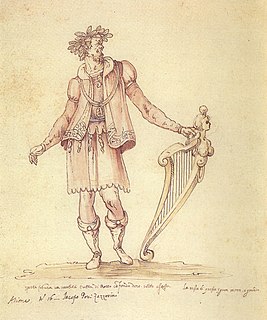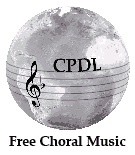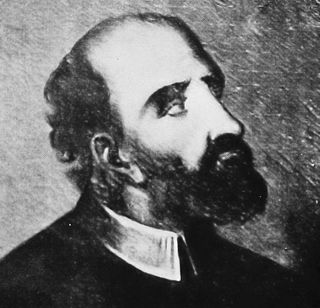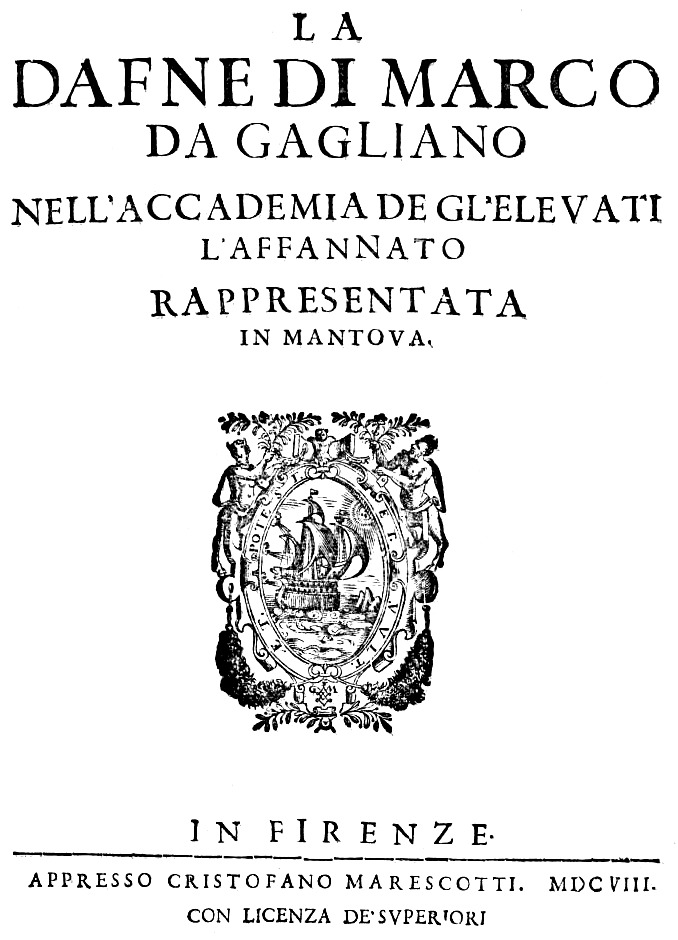This article needs additional citations for verification .(January 2017) (Learn how and when to remove this template message) |
Cristofano Malvezzi (baptised June 28, 1547 – January 22, 1599) was an Italian organist and composer of the late Renaissance. He was one of the most famous composers in the city of Florence during a time of transition to the Baroque style.

An organist is a musician who plays any type of organ. An organist may play solo organ works, play with an ensemble or orchestra, or accompany one or more singers or instrumental soloists. In addition, an organist may accompany congregational hymn-singing and play liturgical music.

A composer is a musician who is an author of music in any form, including vocal music, instrumental music, electronic music, and music which combines multiple forms. A composer may create music in any music genre, including, for example, classical music, musical theatre, blues, folk music, jazz, and popular music. Composers often express their works in a written musical score using musical notation.

Renaissance music is vocal and instrumental music written and performed in Europe during the Renaissance era. Consensus among music historians has been to start the era around 1400, with the end of the medieval era, and to close it around 1600, with the beginning of the Baroque period, therefore commencing the musical Renaissance about a hundred years after the beginning of the Renaissance as it is understood in other disciplines. As in the other arts, the music of the period was significantly influenced by the developments which define the Early Modern period: the rise of humanistic thought; the recovery of the literary and artistic heritage of Ancient Greece and Ancient Rome; increased innovation and discovery; the growth of commercial enterprises; the rise of a bourgeois class; and the Protestant Reformation. From this changing society emerged a common, unifying musical language, in particular, the polyphonic style of the Franco-Flemish school, whose greatest master was Josquin des Prez.
Malevezzi was born in Lucca. From 1551 he lived in Florence, serving the Medicis from 1562. He held a number of organist posts in the city, and also taught pupils, among them Jacopo Peri, who is often regarded as the inventor of opera. From 1573 he held the double post of maestro di cappella at the cathedral as well as at S Giovanni Battista, which was the highest position for a musician in the city. Among his works are three books of madrigals, a book of ricercars, but only two sacred compositions—a curious omission for a composer so closely connected with the church.

Lucca is a city and comune in Tuscany, Central Italy, on the Serchio, in a fertile plain near the Tyrrhenian Sea. It is the capital of the Province of Lucca. It is famous for its intact Renaissance-era city walls.

Jacopo Peri, known under the pseudonym Il Zazzerino, I was an Italian composer and singer of the transitional period between the Renaissance and Baroque styles, and is often called the inventor of opera. He wrote the first work to be called an opera today, Dafne, and also the first opera to have survived to the present day, Euridice (1600).

Opera is a form of theatre in which music has a leading role and the parts are taken by singers, but is distinct from musical theater. Such a "work" is typically a collaboration between a composer and a librettist and incorporates a number of the performing arts, such as acting, scenery, costume, and sometimes dance or ballet. The performance is typically given in an opera house, accompanied by an orchestra or smaller musical ensemble, which since the early 19th century has been led by a conductor.
Because of his activity in Florence, the numerous intermedi that he wrote for the Medici and other members of the aristocracy, his dedication of a book of ricercars to Count Giovanni de' Bardi, and the dedication of a book of madrigals to Emilio de' Cavalieri, it is likely that he was a member of the Florentine Camerata, the group of progressive musicians and poets who, in attempting to recreate the music of ancient Greece, created the first monody and ultimately the first opera. This is reinforced by the fact that he composed much of the music for the La Pellegrina intermedi of 1589, which was carefully designed by the Camerata. Whether or not he was part of the intimate group, his music was among the best known in Florence. One of the grandest compositions of the time, a colossal setting of O fortunato giorno which he composed for a sumptuous intermedio intended for an aristocratic marriage, is for thirty separate vocal parts divided into seven spatially separated choirs. Some of his madrigals are written in the monodic style, which implies further a possible connection with the Camerata.

The intermedio[interˈmɛːdjo], in the Italian Renaissance, was a theatrical performance or spectacle with music and often dance which was performed between the acts of a play to celebrate special occasions in Italian courts. It was one of the important predecessors to opera, and an influence on other forms like the English court masque. Weddings in ruling families and similar state occasions were the usual occasion for the most lavish intermedi, in cities such as Florence and Ferrara. Some of the best documentation of intermedi comes from weddings in the Medici family, in particular the 1589 Medici wedding, which featured what was undoubtedly both the most spectacular set of intermedi, and the best known, thanks to no fewer than 18 contemporary published festival books and sets of prints that were financed by the Grand Duke.

Giovanni de' Bardi, Count of Vernio, was an Italian literary critic, writer, composer and soldier.
Emilio de' Cavalieri, or Emilio dei Cavalieri — the spellings "del" and "Cavaliere" are contemporary typographical errors — was an Italian composer, producer, organist, diplomat, choreographer and dancer at the end of the Renaissance era. His work, along with that of other composers active in Rome, Florence and Venice, was critical in defining the beginning of the musical Baroque era. A member of the Roman School of composers, he was an influential early composer of monody, and wrote what is usually considered to be the first oratorio.
Malvezzi's brother Alberigo (around 1550–1615) was also an organist and composer.










